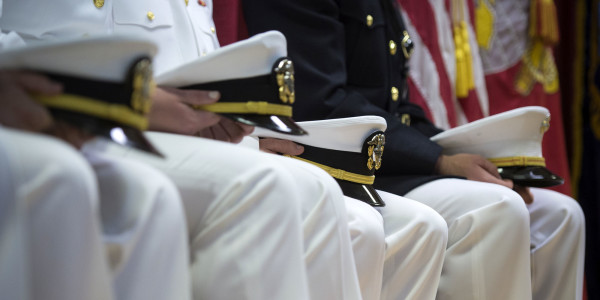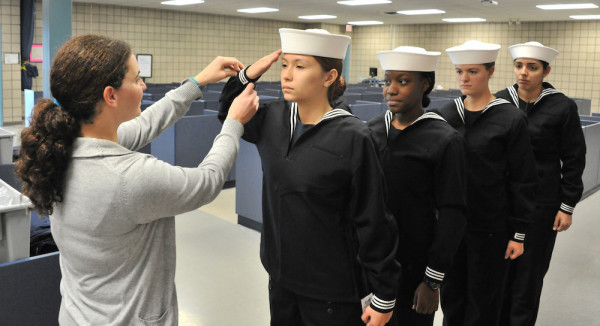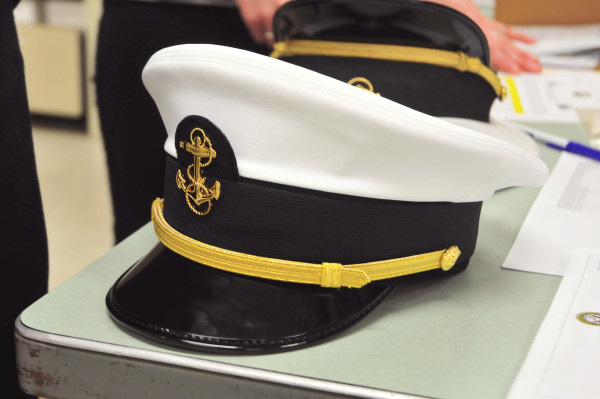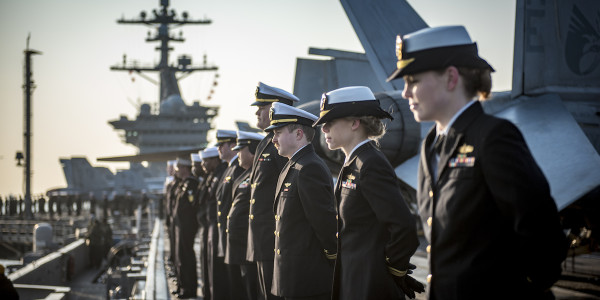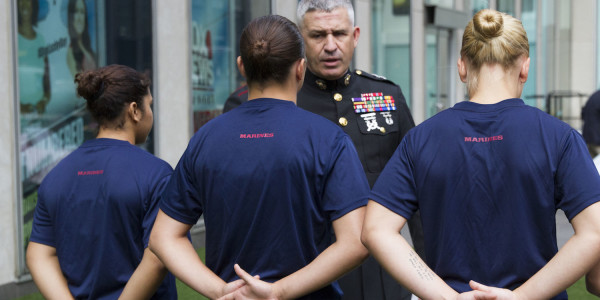Congress has ordered the Navy to halt unpopular, costly and pointless changes to women’s uniforms, thanks to the overwhelming effort of large group of female officers. When the Navy didn’t listen, women affected by the uniform change ensured that Congress did. Women officers spoke up and Congress heard them.
In 2015, Navy Secretary Ray Mabus, one of the most progressive service secretaries ever, decided that “gender equality” meant “looking the same.” He ordered the development of unisex uniform items. In the process, he disregarded numerous studies, including one of female personnel asking for better-fitting versions of existing items. PErhaps the least popular change, aesthetically speaking, was replacement of the “bucket” with the dixie cup for enlisted sailors, and a unisex “alternate combination cover” for officers. (For more of the details, see this earlier story.)
At best, the reasoning behind the changes appeared to be a misguided attempt to strive for gender equality by making everyone look the same. At worst, some perceived the changes as a ploy to line the pockets of uniform manufacturers at service members’ expense. Female Navy officers now had to foot the bill to buy a uniform item they loathed to replace a uniform item they loved. Women in the Navy were generally happy with progressive changes that Mabus pushed for, including integrating women on submarines, advocating for women in combat arms, and tripling the length of maternity leave. This particular change left many women feeling powerless, ignored, and frustrated.
Financial inequality was at the heart of most women officers’ anger over the issue. Critics told women officers to stop “whining” about the matter, citing that uniform changes happen all the time. Female enlisted personnel also had to wear new covers, and received a stipend to purchase them. When most uniform changes occur — such as the upcoming phase-out of blue camouflage — all enlisted personnel get a stipend, and all officers pay out of pocket. In this case, only the approximately 10,000 female Navy officers were stuck with the bill. It was unprecedented and discriminatory.
Related: The Navy’s Uniform Changes Are Anything But Gender Neutral »
When normal avenues of dissent were exhausted, including asking questions at all hands calls and writing criticisms routed via the chain of command, female Navy officers took matters into their own hands. Still writing under the pseudonym of Anna Granville, I compiled opinions expressed on social media, in conversations with fellow officers, and incorporated my own thoughts into a Task & Purpose article. Female Navy officers serving on Capitol Hill incorporated the article into a template distributed via social media that was used to write members of Congress. The same officers who worked on the Hill also worked to make sure the letters were properly responded to, the right questions asked of the right people.
While the Navy required the cover change on Oct. 31, 2016, many women refused to buy it, instead waiting for passing of the 2017 National Defense Authorization Act . Their advocacy and hard work paid off. When President Barack Obama signed the NDAA in December 2016, it superseded the requirement to go out and purchased the “unisex” cover. The law changed the mandatory wear date of the unisex cover to October 2018. It also required the Secretary of the Navy to be transparent about the composition of wear test groups and their results, stipulated that wear test groups be representative of female personnel, and identify costs as a fraction of service members’ pay. The law furthermore required “an identification of the operational need” of the cover, forcing the Secretary of the Navy to explain why the changes are being put forth at all.
Despite the change in the law, Navy has still not released a new message announcing the delay. Perhaps Navy leadership hopes that women won’t know better and will go out and buy the mannish unisex cover that cost millions to develop. Nonetheless, female Navy officers now get to keep their covers, and by law have a say in a decision that affects them.
This victory is proof that service members can have a say in legislation that affects them. Female Navy officers come from different intersectional identities, ethnicities, backgrounds, and political beliefs, and banded together on this issue. They took their grievances from internet forums and wardroom conversations to Capitol Hill, and won.
